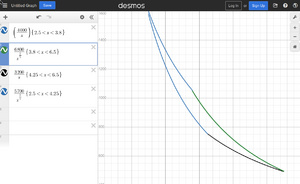Carnot Cycle: Difference between revisions
From wikiluntti
| (One intermediate revision by the same user not shown) | |||
| Line 11: | Line 11: | ||
[[File:CarnotCycle pvDiagram simple.png|thumb]] | [[File:CarnotCycle pvDiagram simple.png|thumb]] | ||
<math> pV = nRT</math>, or more | <math> pV = nRT</math>, or more generally polytropic process: <math>pV^\gamma = C</math>, where is different processes depending on the value of the ''n'': | ||
# n = 0: isobaric | # n = 0: isobaric | ||
# n = ∞: isochoric | # n = ∞: isochoric | ||
# n = 1: isothermal | # n = 1: isothermal | ||
# n = γ: isentropic | # n = γ: isentropic (adiabatic) | ||
Adiabatic index <math>\gamma = c_p/c_v</math> is for the air 7/5. For the ideal gas we have | Adiabatic index <math>\gamma = c_p/c_v</math> is for the air 7/5. For the ideal gas we have | ||
<math>p^{1-\gamma} T^\gamma = C</math> and <math>TV^{\gamma-1} = C</math>. | <math>p^{1-\gamma} T^\gamma = C</math> and <math>TV^{\gamma-1} = C</math>. | ||
Latest revision as of 08:31, 17 August 2024
Introduction
- Isothermal expansion (No heat transfer / energy transfers): Heat is transferred from the hot reservoir to the gas.
- Isentropic (reversible adiabatic: Heat transfers / no energy transfer) expansion: without transfer of heat to or from a system, so that Q = 0, is called adiabatic, and such a system is said to be adiabatically isolated. Eg. the compression of a gas within a cylinder of an engine is assumed to be rapid that little of the system's energy is transferred out as heat to the surroundings.
- Isothermal compression
- Isentropic compression
Ideal Gas

, or more generally polytropic process: , where is different processes depending on the value of the n:
- n = 0: isobaric
- n = ∞: isochoric
- n = 1: isothermal
- n = γ: isentropic (adiabatic)
Adiabatic index is for the air 7/5. For the ideal gas we have and .
- (n=1) Isothermal compression: T is constant, thus we have .
- (n=γ) Isentropic






